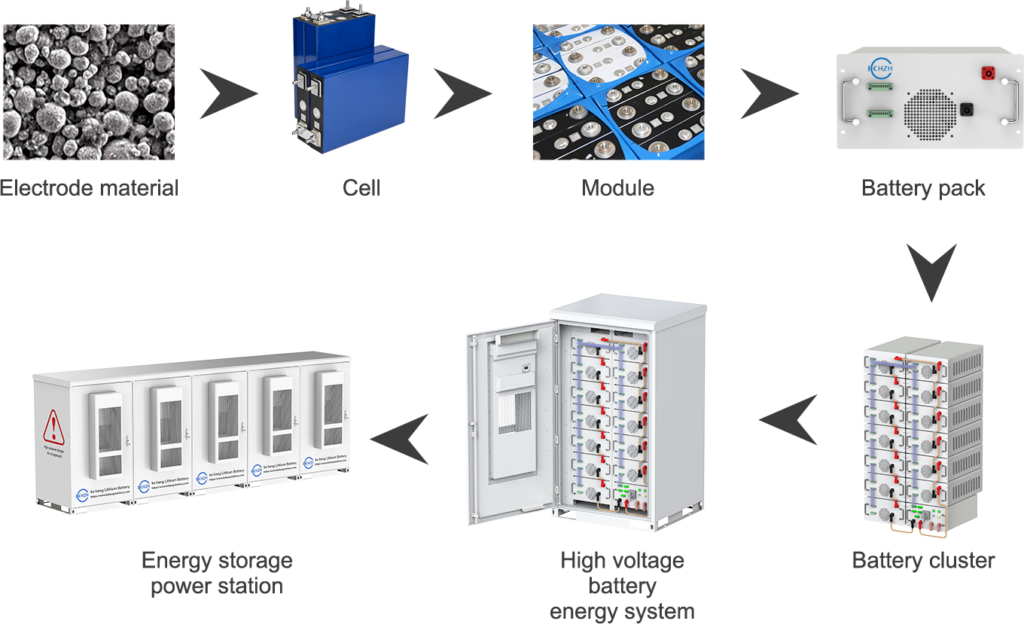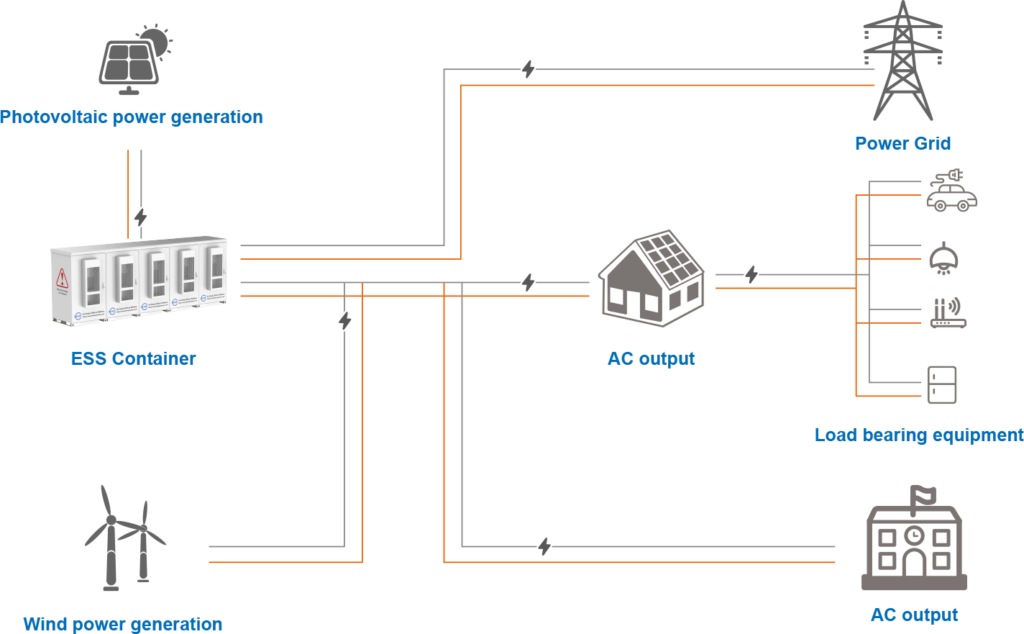C&I Energy Storage System
- Our Container energy storage system for commercial and industrial applications,take control of your energy electricity bills and improve energy efficieny in a enviromental-friendly way.
ESS Product Specifications
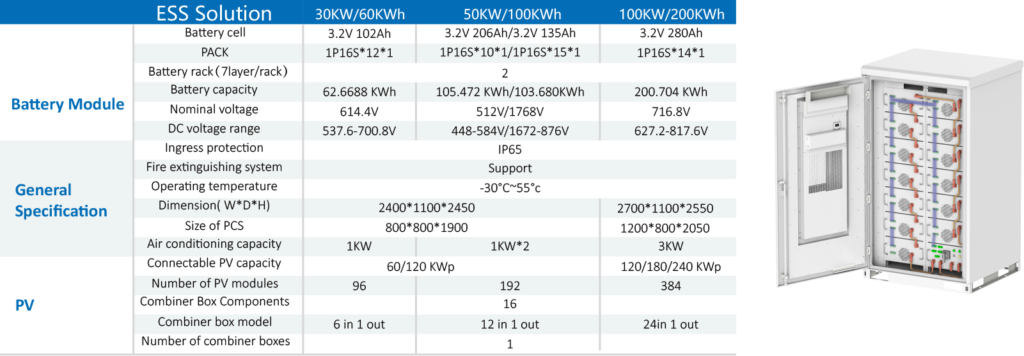
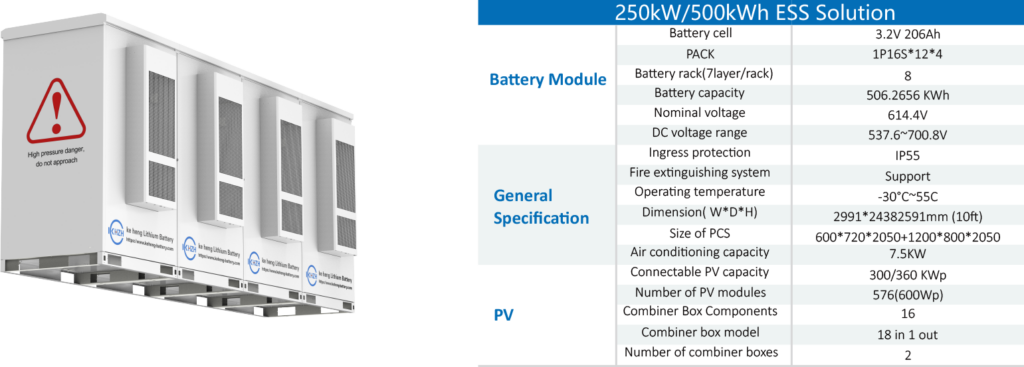
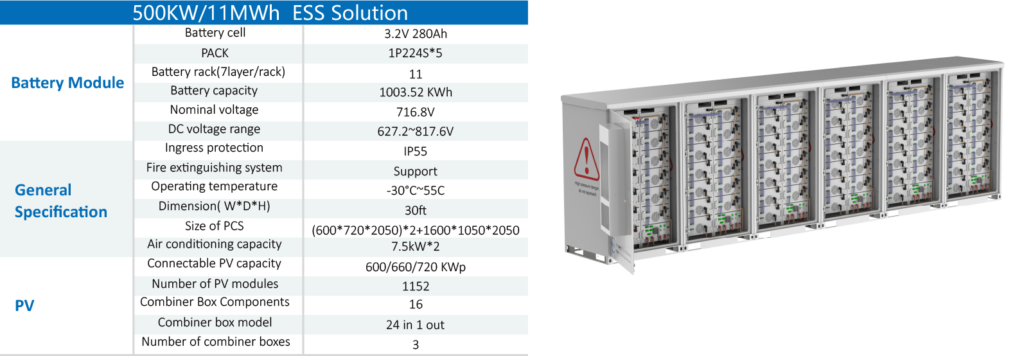
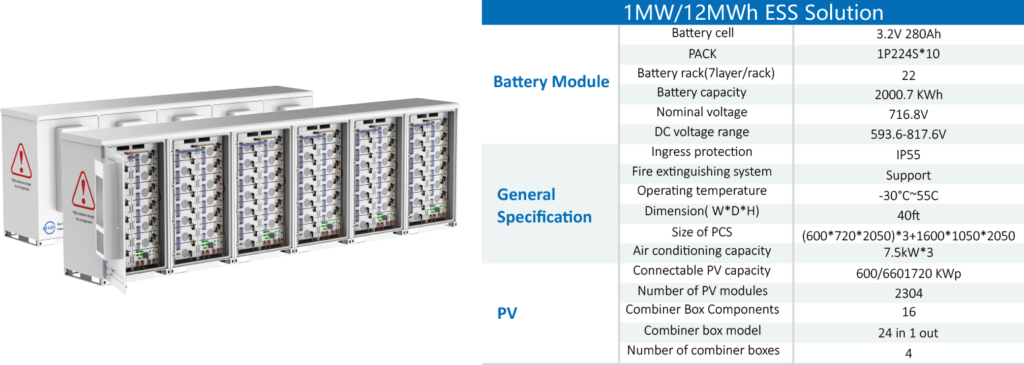
Custom Your Commercial & Industrial ESS Solutions
Let Keheng New Energy’s 15+ years of experience in energy storage industry can help with your next project. You will get a complete proposal with our 50+ engineers team stand behind you!
Let's see Inside Configurations
We use the top brands of Lifepo4 battery cells inside to ensure the long cycle life of the energy system because the lifepo4 material technology has a unique stable, reliable, and durable performance crucial to the ESS applications.
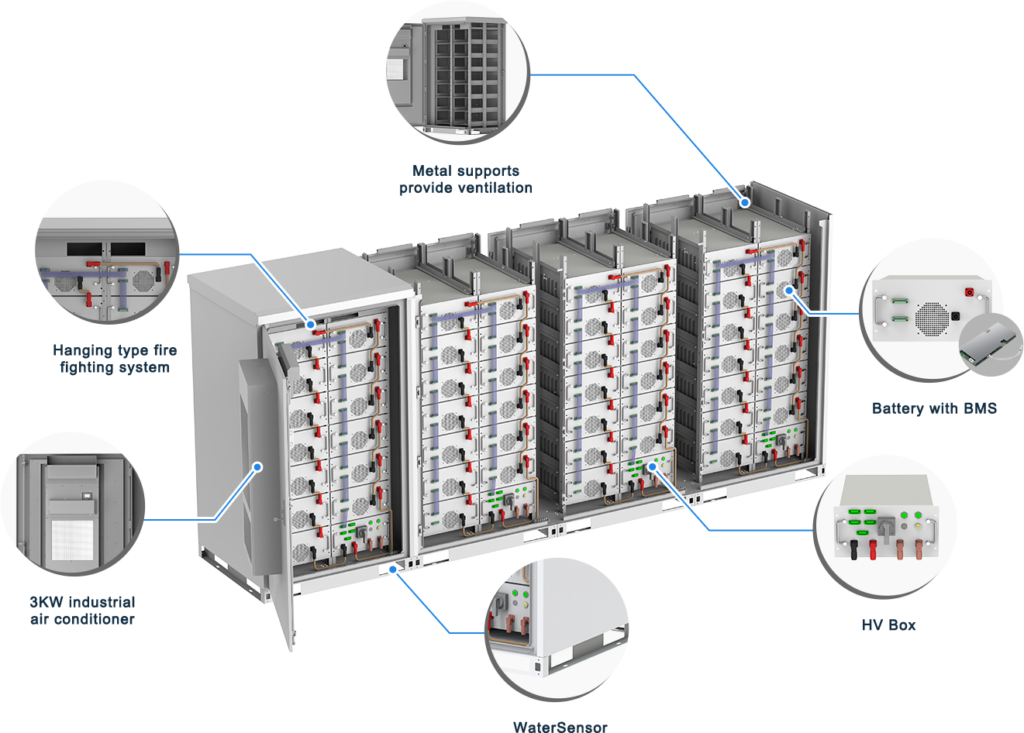
Why WE CAN grow your business?
Thinking outside the box to realize the uniquity of energy storage power! For over 15 years, we have been providing battery solutions to home energy service providers, medical device back-ups, and power in remote areas around the world. Let’s raise your profit to a new level!
ODM/OEM Service
Quickly create custom lithium batteries designed to your needs,support OEM/ODM.
Extream Safety
LiFePo4 lithium is unique chemistry won’t catch fire, overheat, or explode.
15 years warranty
We use top quality battery cells and offer a 15-year warranty on the battery energy storage system.
After Sales and Warranty
Good after-sale service, long product warranty and continual technique support.
The Turnkey Energy Storage Solutions
The main advantages and applications of C&I energy storage solutions:
1, Reducing Peak Demand Charges
Peak period usually occurring daytime work hours, and peak demand charges take up much at company’s electricity bill. With commercial and industrial container BESS, companies can use low-cost electricity to charge storage batteries during off-peak hours, and use during peak hours, thus effectively reducing peak demand charges and saving a lot of costs.
2, Provide backup power during power outages
Unplanned power outages can disrupt business operations and lead to certain potential losses. In this case, C&I BESS can serve as a reliable backup power source, ensuring that the impact of power outages on operations is minimized and that the business is protected from the adverse effects of power outages.
3, Supporting Renewable Energy Integration
With the increased awareness of carbon emissions, many companies will use renewable energy such as solar and wind, but these energy can not continue to supply electricity to the enterprise or factory, the solar and wind energy can be storage in the battery system, and it will use when necessary, so as to ensure a stable and reliable supply of green energy.
We offer one-stop solar energy storage solutions for Small to Medium Commercial & Industrial projects. Our solution features Built-in microgrid controls (on and off grid applications), adaptive EMS (dynamic peak shaving, active time-of-use, zero export, VPP and more), support from 204V to 817V applications.
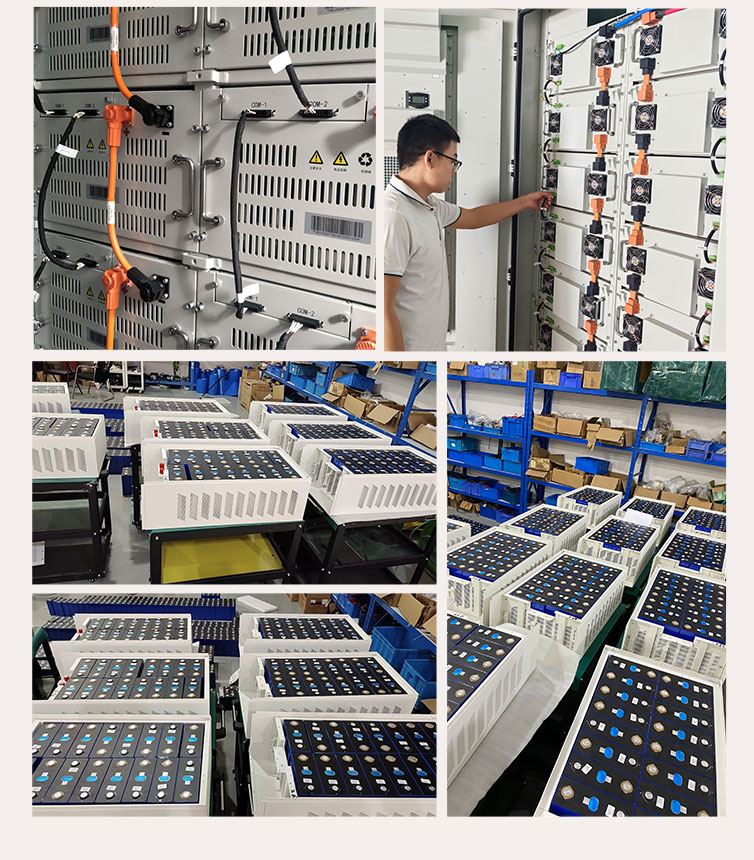
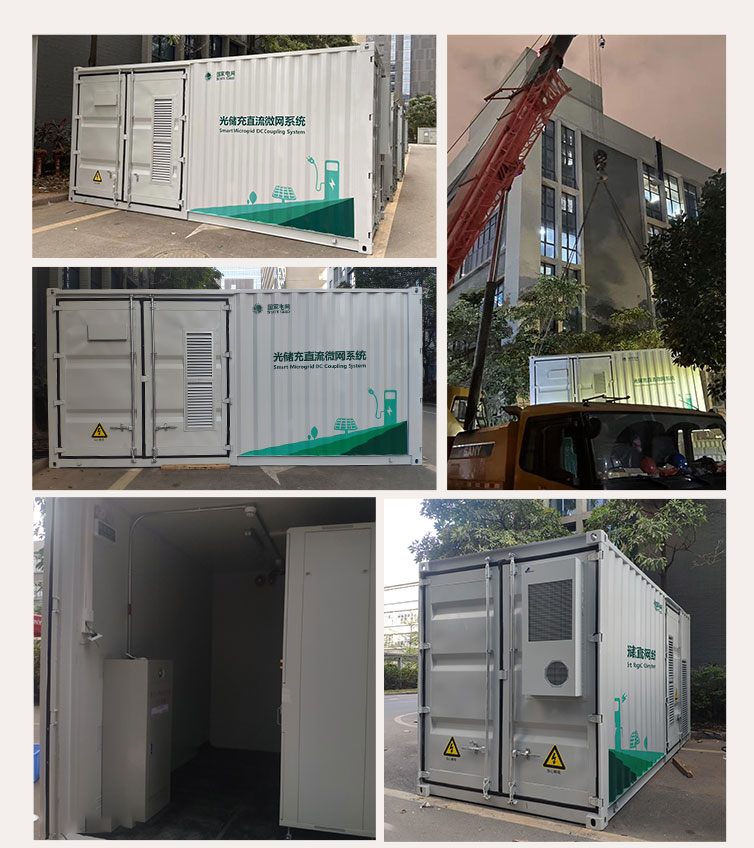
Importance of Battery Energy Storage in C&I industry
Solar and wind renewable energy are sustainable and environmentally friendly, but inconsistent. In this way, the large-scale battery storage systems play an important role to ensure the uninterrupted power when needed, regardless of the productivity of these renewable energy.
In addition, governments in the worldwide are prioritizing grid stability and energy independence. This has spurred the need for comprehensive energy storage solutions that can handle fluctuating loads on the grid, maintain a balance between supply and demand, and reduce dependence on conventional energy sources.
As an energy storage manufacturer, we are well aware that the price of lithium carbonate as well as silicon material will fall back in 2023 to drive down the price of battery packs and photovoltaic modules, and the era of optical storage parity will come! As the peak-to-valley price differential widens, commercial and industrial energy storage systems show sub-linear growth. It enables companies to store excess energy generated during non-peak hours for use during peak hours, helping them manage energy consumption more effectively and save on electricity bills. Commercial and industrial energy storage plays a pivotal role.

Container energy storage system (C&I ESS)
- Mega Robotics Plan -- lnnovative ESS infrastruclure manufacturer;More than 300 experienced workers;
- Professional Team -- With 80 technical R&D team staff; Advanced engineering & design capabilities;
- Technology Management -- ERP & CRM management system; PLM & MES and warehouse management system ;
- Efficient Supply Chain -- Advance supply chain system;Strict QC for raw materials &manufacturing process; Strategic alliance with top industry brands ;
- Smart Manufacturing -- 15 years of industry manufacturing experience; Data analytics-based approach for the development of customized solutions; Automatic control systems;
Production of real photos
As an energy storage battery manufacturer, we always have our best try to offer solutions for the energy projects, according to data analytics-based approach to determine application need.
Battery Warranty Guarantees Your Benefit
If there is any fault because of battery problem, you can contact us, send us video and picture, our sales engineer will deal with it. When the failure rate is over 3‰, we will send you the new battery for a replacement for free, and we’re responsible for all shipping fees of exchange services.
FAQs About home battery backup
We will do our best to answer your most frequently asked questions.
A C&I ESS system is a large-scale energy storage solution, often the size of shipping containers, which houses batteries and associated systems. These systems are designed to store substantial amounts of electricity, either from the grid or renewable sources, offering flexibility in terms of installation location, capacity expansion, and transportation.
Commercial entities can leverage the Container ESS for various applications. This includes load leveling, where energy is stored during low-demand periods and used during peak times to avoid higher energy costs, backup power during outages, reducing reliance on the grid, and facilitating the integration of renewable energy sources, ensuring a constant power supply even when renewables are intermittent.
ESS promotes greener operations in several ways. It enables industries to harness and efficiently use renewable energy, reducing carbon emissions. When integrated with renewables, ESS can help in reducing the need for non-renewable peaker plants, further decreasing greenhouse gas emissions.
The ROI is influenced by several factors, including energy costs, system costs, usage patterns, and any financial incentives available. Generally, with the savings from demand charge reductions, efficient energy usage, and possible revenue from grid services, industries can expect an ROI period of 5 to 10 years, though this can vary.
Yes, various regional and international standards address the safety, performance, and interoperability of ESS. Compliance ensures that the systems meet specific benchmarks for reliability and safety, and many regions require these certifications for installation and operation.
ESS can be used by commercial and industrial entities to participate in demand response programs. When the grid faces high demand, stored energy can be dispatched to alleviate grid stress, and businesses often receive financial incentives in return from utilities.
Request An Instant Quote For Your Projects!
If you have any lithium battery questions and specific requirements, please contact one of our industry experts. We are happy
to answer any questions you may have!
Send us a message if you have any questionsor request a quote.Our experts will give you areply within 24 hours and help you select the right battery you want.
- +86 0755 21044322
- info@lithiumbatterytech.com
Guide to C&I Energy Storage System
Foreword Introduction
Against the backdrop of the current energy transition and climate change challenges, commercial and industrial energy storage systems (C&I ESS) have emerged as a key technology to drive sustainable development. It not only optimizes energy use but also enhances power supply reliability and supports clean energy integration while bringing economic benefits to users. With technological advances and cost reductions, C&I ESS has shown broad prospects in a variety of application scenarios, including zero-carbon smart parks, commercial complexes, and data centers. This paper explores the key concepts of commercial and industrial energy storage, application scenarios, and their significance to the future energy system.
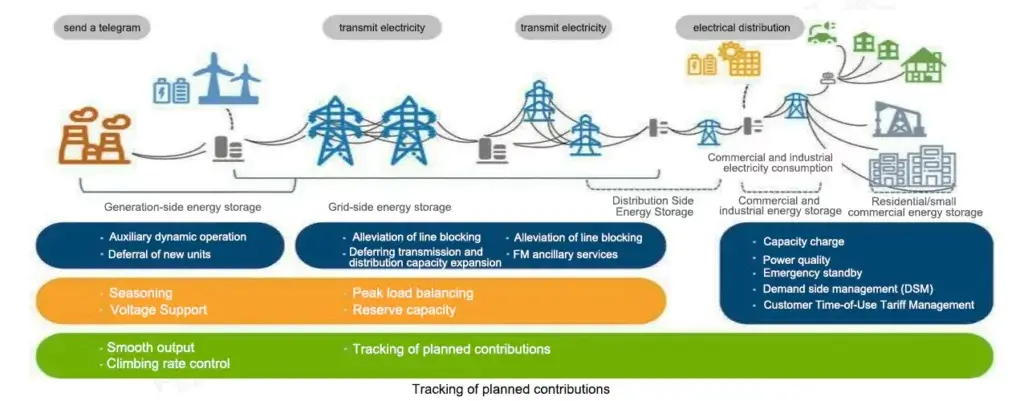
C&I Energy Storage System
Commercial and industrial storage refers to a system that stores energy in different forms to be released and used when needed. It plays an important role in the industrial and commercial sectors. It mainly has the following functions: 1, regulating the grid load, using excess power for storage, and releasing energy when the load increases, thus balancing the grid load and reducing the imbalance between supply and demand; 2, improving the efficiency of energy utilization, which can convert some unstable energy into a stable form for storage, and then releasing the energy when it is needed; 3, back-up power supply to ensure that the production and commercial activities are normally Conducted to reduce the impact of power interruptions on the industrial and commercial sectors
Energy storage in front of the meter
Pre-meter energy storage is categorized into power-side energy storage and grid-measured energy storage, which are often called “big storage”.
Power Side Energy Storage
It is mainly used to smooth the output of wind and solar power generation, solve the problem of new energy consumption, and provide frequency regulation auxiliary service for thermal power traditional energy units.
Grid measurement energy storage
Mainly to realize system frequency regulation
Relieve grid blockage and improve transmission and distribution capacity: When the line load is larger than the line capacity, the line is blocked and unable to transmit electricity. Installing the energy storage system upstream of the line can store the power that cannot be transmitted, and when the line load is less than the line capacity, the energy storage system then discharges the power to the line.
Deferring the construction of new transmission and distribution facilities: In transmission and distribution facilities where the line load is close to the line capacity, the energy storage system can defer the expansion and construction of new transmission and distribution facilities by increasing the transmission and distribution capacity.
Behind-the-Meter Energy Storage
Customer Side Energy Storage
The main difference here is between industrial and commercial energy storage and household energy storage, both of which are self-generated by the user to ensure the stability and reliability of their power consumption, while at the same time achieving peak filling, reducing the cost of electricity, relying on the peak power from which to make a profit.
Industrial and commercial peaking
It is closely related to load forecasting. Based on the load forecast for the next day, a generation plan is formulated to match the load for the next day, and on the next day, the operation is mechanically executed according to this plan.
Industrial and commercial frequency regulation
FM is an action based on peaking. Because our forecast is accurate, but also inevitably appears the forecast value and the actual value of the deviation, this deviation must be compensated for. At this time, the FM system has to play a role, using one-time FM and AGC, to maintain the system stability, this transition process time is very short. In summary, FM is an automatic behavior that can be accomplished without any intervention.
What are the terms used in commercial and industrial energy storage? And what do they mean?
What Is MW?
MW is the amount of power that can be input or output under certain time conditions for a given electrochemical energy storage device. The unit is W, kW, MW, GW conversion ratio is 1:1000.
What Is MWH?
MWH is the amount of power discharged by the battery under certain conditions, which is also one of the important performance indicators to measure the performance of the battery. The unit is wh, kwh, Mwh, GwhTwh, and the conversion ratio is 1:1000.
What Is DoD?
DoD (Depth of Discharge) represents the depth of charging and discharging: it is an index used to describe the degree of utilization of battery capacity in the charging and discharging process of the energy storage system. It represents the percentage of the discharged battery capacity relative to the total capacity of the battery. The smaller the number, the shallower the discharge. For example, a battery with 5 kilowatt-hours (kwh) of power and a maximum allowable discharge of 4 kwh would have a depth of discharge of 80%.
What Is PCS?
The PCS assumes the role of an executive, and its main function is to control the process of charging and discharging the battery pack and to perform the conversion between DC and AC. In the case of no power, it charges the load directly.PCS consists of DC/AC bi-directional converter and control unit, which accepts the control instructions from the backend through the communication protocol, and the sign as well as the size of the power instruction, it controls the converter to charge and discharge the battery, realizing the regulation of active and reactive power of the grid.PCS communicates with the BMS through the CAN interface to obtain the status information of the battery pack, to PCS communicates with BMS through the CAN interface to obtain the status information of the battery pack and realize the protective charging of the battery pack.
What Is EMS?
EMS is mainly responsible for data acquisition, network monitoring, and energy control to realize the energy control of the microgrid within the energy storage system and ensure the natural operation of the microgrid and the whole system. The main functions include monitoring and acquisition, data analysis and optimization, energy scheduling and control, detection, and safety protection.
What Is BMS?
The BMS acts as a sensing system and is responsible for battery monitoring, evaluation and protection, and equalization. The main function is to monitor the operating status of the battery inside the storage unit and to ensure the safe operation of the storage unit. Together with the battery cells, the BMS measures the parameters of the battery cells, including voltage, current, temperature, etc., to prevent overcharging and over-discharging and to prolong the service life of the battery.
What Is EPC?
EPC refers to the owner commissioned in accordance with the agreed laws on the design and procurement of the project of energy storage, so that the whole process is fully completed general contracting. Advantages: clear contractual relationship, more direct communication channels, improved efficiency and construction speed, and optimization of the project
Four major revenue streams for commercial and industrial energy storage:
What is called peak shaving and valley filling?

It refers to the use of energy storage devices (e.g., battery packs) in the power system to regulate the grid load to balance the fluctuation of the grid load and realize the stable operation of the power system. Among other things, peak shaving and valley filling algorithms are mainly used to adjust the supply and demand relationship of the grid, reduce the pressure of the grid load during the peak period, and at the same time, fill the vacancies of the grid load during the trough period
Load prediction: Predicting the trend of grid load through historical data, weather forecasts, and other factors.
Determine the charging and discharging strategy: Based on the results of load forecasting, formulate the charging and discharging strategy of battery energy storage equipment. For example, during the peak load period, the battery storage equipment can take constant power charging mode to minimize the grid load; during the low load period, the battery storage equipment can take constant power discharging mode to fill the grid load vacancy.
Optimization control: According to the real-time load of the grid and the charging and discharging status of the battery storage equipment, the charging, and discharging power is adjusted in real-time to realize peak shaving and valley filling.
Monitoring and adjustment: Feedback adjustment of the algorithm through real-time monitoring of the grid load and the operation status of the battery energy storage equipment to improve the accuracy and adaptability of the algorithm.
The peak-shaving algorithm has the following advantages:
Flexibility: real-time adjustment of charging and discharging strategies according to changes in grid load, with high adaptability.
Economy: Reduce grid operation costs by optimizing the charging and discharging strategies of battery storage devices.
Stability: effectively balance the supply and demand relationship of the grid, and improve the stability of grid operation.
Environmental protection: Reduce fossil energy consumption through the use of renewable energy generation, which is conducive to environmental protection.
What is Capacity Reduction and Demand Reduction?
Capacity reduction refers to the role of the energy storage system to reduce the overall capacity demand of the transformer, thereby reducing the construction cost of transformer capacity expansion as well as the later fixed-capacity tariffs or maximum demand tariffs.
When an enterprise installs an energy storage system, the power of the energy storage machine can replace part of the transformer capacity to supply power to the load, which smoothes out the peak load power and reduces the overall capacity demand, thus reducing the construction cost of the transformer as well as the capacity charge at a later stage.
What is Static Capacity Increase?
Static capacity increase means applying to the power authority for a larger transformer, but this is very expensive. Dynamic capacity increase is done by installing an energy storage system. Through the energy storage system, energy is stored and discharged during the overloaded operation of the transformer, which reduces the transformer load and thus reduces the cost of transformer capacity increase and renovation. The energy storage system not only significantly reduces costs, but also increases revenue through peak and valley arbitrage.
What is the dynamic capacity increase?
Dynamic capacity increase is through the installation of energy storage systems. Through the energy storage system in the transformer overload operation time storage discharge, reduce the transformer load, to reduce the transformer capacity expansion and renovation costs. The energy storage system can not only greatly reduce the cost but also increase the income through the peak and valley arbitrage.
What are the application scenarios for industrial and commercial energy storage?
Industrial Manufacturing + Energy Storage
Industrial manufacturing enterprises, such as cement factories, steel mills, paper mills, chemical plants, material factories, etc., generally have large power consumption, high load for a long time, equipment energy consumption, etc., and China’s industrial parks have a high electricity price difference, applicable to the peak and valley arbitrage of the energy storage project, for enterprises to save the cost of electricity.
In addition, in the case of peak frequency regulation, and power cuts, the energy storage system can not only be used an energy supplement to ensure the smooth running of production and operation but also as a security power supply to protect the engine and other large-scale equipment from power outage damage.
Public facilities and urban infrastructure + energy storage
Public facilities and urban infrastructure, i.e., public transportation, public buildings, urban public service facilities, urban infrastructure, and communication facilities, need to cope with power shortages and unstable power quality.
The application of energy storage technology can optimize the energy structure of the power grid and even improve the utilization efficiency of renewable energy, thus achieving efficient management and regulation of urban energy. At the same time, energy storage can also provide backup power for urban infrastructure, guarantee the stable operation of urban infrastructure, and improve safety and reliability. For example, some cities will set up energy storage devices in schools, parks, subway stations, highways, airports, and other public places to cope with peak power loads and sudden power demands and provide convenience for residents.
Commercial and Service Sectors + Energy Storage
Commercial and service sectors, such as shopping malls, hotels, office buildings, etc., need to be supported by large amounts of electricity during busy consumption seasons. Therefore, energy storage systems can be used to store electricity to provide backup power in the event of a shortage of energy supply or an increase in demand. In addition, commercial energy storage systems can be used to balance the power needs of commercial buildings, reducing energy waste and energy costs.
Healthcare + Energy Storage
Medical institutions are among the key units of energy use. Hospitals in particular are never allowed to have any operational problems because of the special nature of life services. Energy storage projects can act as a UPS (Uninterruptible Power Supply) function to ensure that the important loads in the above scenarios do not lose power, providing a solid power guarantee for smooth operation.
Emerging Industries + Energy Storage
The application of energy storage technology in emerging industries includes smart grids, electric vehicles, the Internet of Things, artificial intelligence, big data, and other aspects. For example, an energy storage system connected to a data center can enhance the reliability of the data center’s power supply and prevent data loss due to occasional power outages. It can also make the data center no longer a simple power load through peak shaving and valley filling, capacity deployment, and other mechanisms to improve the economics of power operations and achieve cost reduction and efficiency.
Zero-carbon smart park + energy storage:
In zero-carbon smart parks, energy storage systems are combined with renewable energy sources (e.g. solar and wind) to help realize energy self-sufficiency and reduce carbon emissions.
Commercial Complex + Energy Storage:
Commercial complexes use energy storage systems to balance energy demand during peak periods, reduce electricity costs, and provide emergency power in the event of a power outage.
Data Center + Energy Storage:
Energy storage systems in data centers maintain operations during grid instability or power outages, ensuring data security and access continuity.
Optical storage and charging integration:
This is a system that combines solar power generation, energy storage, and EV charging stations to store solar energy and use it for EV charging.
5G Base Station + Energy Storage:
The energy storage system provides a stable power supply for 5G base stations to ensure the reliability of communication networks, especially in areas with unstable power grids.
Household + Energy Storage:
Households can store electricity generated from renewable energy sources such as solar energy through energy storage systems for daily use, reducing reliance on the grid.
Microgrid + Energy Storage:
Microgrids combined with energy storage can realize autonomous management of energy, especially for remote areas or places that require a high degree of energy reliability.
Mining + Energy Storage:
The application of energy storage systems in mining areas can effectively manage energy demand, especially in remote areas or mining sites with unstable energy supply.
Emergency energy storage power supply:
Energy storage systems can be used as an emergency power source to provide critical power support during natural disasters or other emergencies.
Urban rail transit + energy storage:
Energy storage systems can store energy generated by urban rail transit during braking for vehicle acceleration or station energy needs.
Summary
Through an in-depth discussion of industrial and commercial energy storage systems and their application scenarios, we can see the important role of energy storage technology in realizing energy efficiency, power supply reliability improvement, and supporting renewable energy. Whether it is in improving energy self-sufficiency in industrial manufacturing optimizing energy management in commercial complexes and data centers, or even in emerging industrial fields such as 5G base stations and smart city construction, energy storage systems play an indispensable role. With the continuous advancement of technology and the expansion of application areas, commercial and industrial energy storage is expected to become an important pillar of the future energy system, helping to realize a greener, more efficient, and sustainable energy future.

